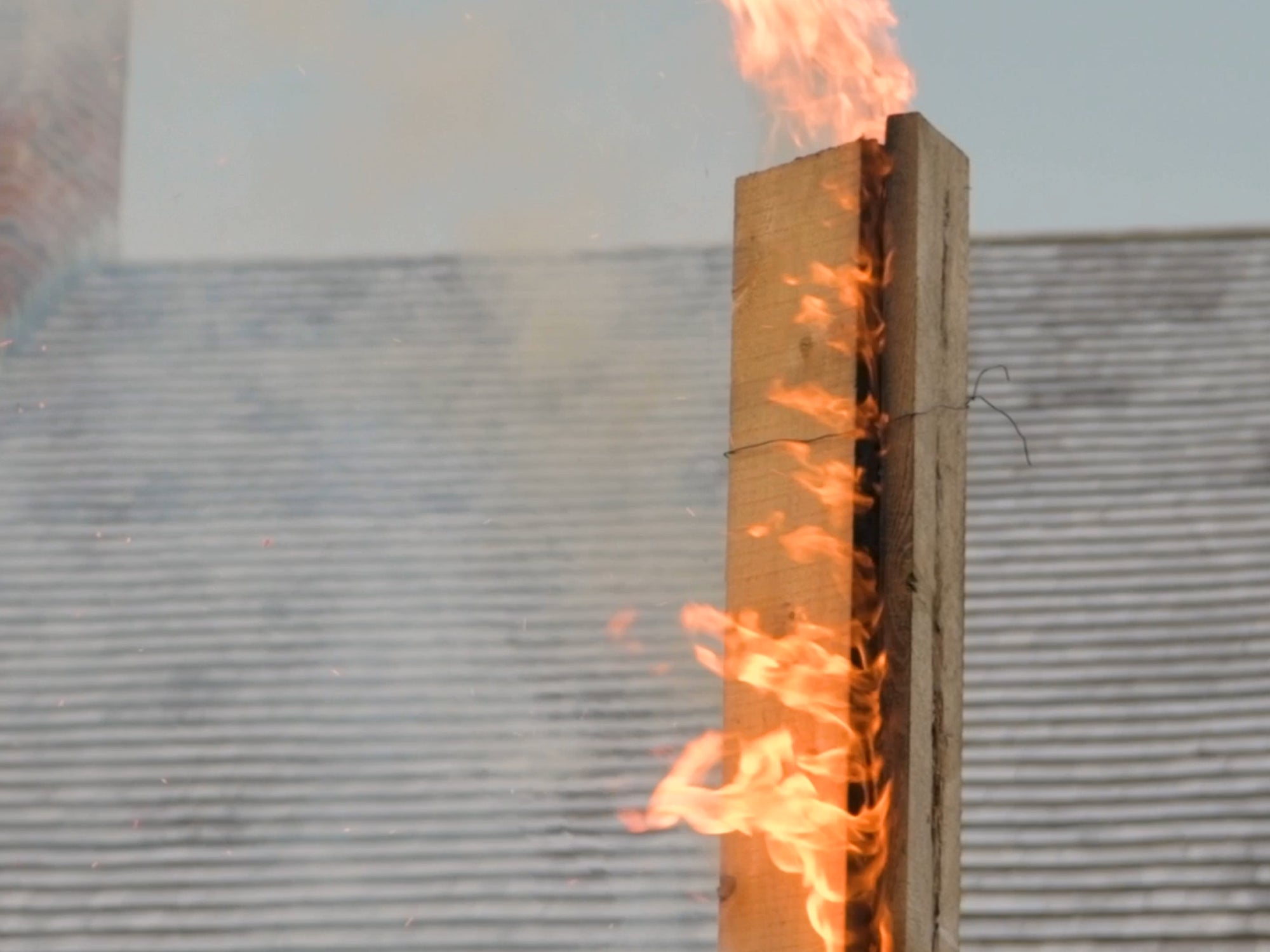We’re often drawn to traditional ways of working with natural materials. We find inspiration in techniques that have been practiced and honed for generations, which come from a deep respect of the material. Rather than hiding or masking the material's original qualities, they highlight and embrace them.
One technique that we’ve been learning more about is the traditional Japanese method of preserving wood to create yakisugi.
Read on to discover more about yakisugi, and how you can perhaps draw inspiration, too.

Photo courtesy of Miles&Miles
A Brief Introduction
Yakisugi translates to “burned Japanese cedar” in English, although it’s sometimes mistakenly known as “shou sugi ban” in North America stemming from a mistranslation. But both terms ultimately refer to the same thing—cedar that’s been heat-treated with fire.
The process to create yakisugi has been used in Japan for thousands of years to preserve cedar. Bringing together both function and beauty, yakisugi creates a deep, textured charcoal colour while also increasing fire resistance and rot resistance. The heat-treating process allows cedar to stand up better to the natural elements, helping it to last longer across all seasons.


Photo courtesy of Miles&Miles
How Yakisugi Works
It’s easy to assume that burning wood would weaken it, not strengthen it. But in the case of yakisugi—when the process is done correctly and by an expert—the charcoal layer that’s been created ends up protecting and reinforcing the wood. Heat-treating wood can make it more durable outdoors, and more resistant to things like pests, fire, weather, and more.
The yakisugi process involves charring cedar wood planks with fire. This is traditionally done by binding together three big pieces of cedar to make a tunnel, and using fire to burn the interior. Once the cedar is has been charred and cooled, it can either be left as is, or brushed or finished with oil—all depending on the desired look.
The Beauty of Cedar
Yakisugi is typically made with Japanese cedar—the "sugi" in yakisugi means cedar in Japanese. A beautiful tall and towering tree, Japanese cedar is also the national tree of Japan, often planted next to temples and shrines. Not all woods hold up well to the yakisugi process, but cedar works because it’s both soft and porous, but can also stand up to the burning process.
Here on the western coast of Canada—where GOODLAND is based—we use western red cedar in our Wood Burning Hot Tub and other accessories for a lot of the same reasons. With its weather-resistance and durability, it’s one of the primary materials that we work with. But, we also love it for its beautiful grain and aromatic scent.
Western red cedar also holds up well to the yakisugi process, creating an even more durable and weather-resistant material. Just like raw cedar, yakisugi develops a patina over the years, beautifully showing the passage of time.

Photo courtesy of Miles&Miles
Why We Love Yakisugi
Heat treatment is a natural approach to preserving wood—using only wood, fire, and a few simple tools. This limits the use of chemicals, and instead emphasizes working with nature for an approach that’s kinder to Earth. The process helps to bring out the best qualities in cedar—its durability, longevity, and beauty.
Yakisugi can also be a more sustainable approach, too. The fire-hardened properties of yakisugi makes it more resistant to weather, water, rot, pests, and can even help it become more resistant to fire. And by helping cedar stand up better to the elements and last longer, it extends the lifespan of the wood. And, when our resources last for longer, we don’t need to extract as many.
Yakisugi cladding also requires minimal maintenance. Once the process is complete, not much work (or any) is required to keep the cedar performing well, except the occasional touch up.
More than simply practicality, yakisugi has an artful yet minimal aesthetic. The rich, deep charcoal colour allows for it to contrast beautifully against the sky and alongside other materials. The best design effortlessly merges both function and form, and we are regularly inspired by yakisugi’s ability to do both.



